�

�
"The New Rover 3500" (Motor Sport's first impressions of the Rover SD1)
�Auntie's Sporting Great-Nephew Makes "Buy British" a Must
��
as published in British V8 Magazine, Volume XVI Issue 1, May 2008�
�
Re-printed unedited by exclusive written permission of "Motor Sport".
�
This article originally appeared in their July 1976 issue.
�
New photos by Simon Austin have been added.�
�
Unless I am very much mistaken, June 30th, 1976 will go down in contemporary motoring �
history as the day that Britain put the plug in the tidal flow of medium-to-large-size �
luxury cars poured in upon us, in ever-increasing volume, from Continental motor �
manufacturers. On that date (yesterday, to readers who receive MOTOR SPORT on its �
official publication day - who says monthly magazines are always late with the news?)�
Leyland Cars announced the totally new, in all but name and basic engine, Rover 3500. �
This 125 m.p.h. five-door, five-gear, five-seat, 3.5-litre V8 saloon of thoroughly �
sporting demeanor and astonishing fuel frugality offers a specification which no �
Continental manufacturer can match. A specification which Continental manufacturers �
would surely persuade us was remarkably advantageously priced, if it was their product,�
at anything over £6,000. This new product, from a purpose-built, 64-acre factory in �
Solihull, part of a £95 million investment, can be bought for just £4,750. Amazing.�
�
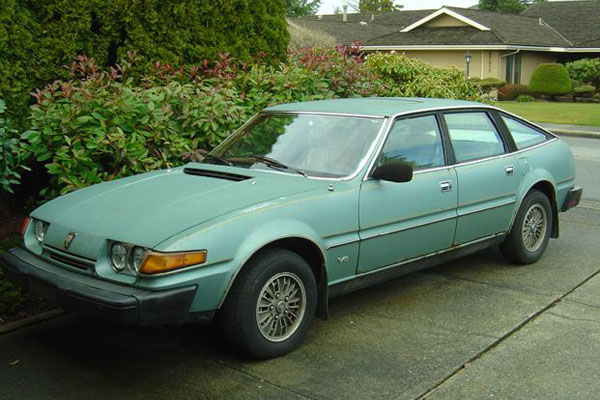
�
�
Whereas complexity was the key-note of the old P6 2000/3500 series, SD1, as this first �
new Rover saloon since 1963 has been known during its five year gestation period, has �
simplicity as one of its virtues, reflecting the changed approach of modern motor�
engineers. The steel body is of monocoque construction, the de Dion rear axle has been �
usurped by a live axle and that over-complex front suspension has given way to MacPherson�
struts. This has benefited production costs, ease of servicing, and weight, the last in �
relative terms, for this 26.9cwt car is 5.25 in. longer - at 15 ft. 5 in. - than the old �
model, while its 5 ft. 9 in. width is 3 in. greater, so consequently weighs 136 lb. more, �
in manual form. The engineering buck stopped at Rover-bred genius Spen King, now Leyland �
Cars' Director of Engineering, while responsibility for the modernistically stylish, �
aerodynamically magnificently efficient (it has a drag coefficient of 0.39), body lay �
with David Backe, Leyland Cars' Director of Styling. Talking of bucks, Bache says that �
early clay bucks of the design were put alongside cars like Ferrari and Maseratis "and �
despite the fact that it is a fully practical hatchback saloon car and not a cramped �
Grand Tourer it looked perfectly in keeping". The reason I mention this is that the front �
corners of that rounded nose shown unmistakable Ferrari Daytona influence - and who would �
complain about that? There is some Citroen and Lancia Beta resemblance too. �
�
For safety, this striking shape has a crushable-end, rigid passenger cell structure for �
impact and roll-over safety, horizontal compression struts in each door, the fuel tank �
mounted ahead of the axle beneath the floor and a front-hinged bonnet. If these features �
should be tested, repair has been facilitated in collaboration with the Motor Insurance �
Research Repair Association. For anti-corrosion, there is full undersealing, electrophoretic �
priming, zinc-coated steel sills, stainless steel bumpers, a plastic front apron, an �
alumininised exhaust system and a system which feeds air from the heater intake chamber �
through the sill box members to prevent build-up of corrosive damp. That injection-moulded �
plastic front apron acts as an anti-lift air dam, directs air into the radiator and contains �
the standard fitment auxiliary lamps. The inset, sloping headlamps are halogen Lucas H4, �
the rear lights incorporate high intensity fog guard lamps and reversing lamps and are �
crenellated, Mercedes-style, to avoid dirt build-up. A warning light indicates failure of �
any side, tail, or stop lamp, a most useful feature fitted for the first time on a British �
production car. There are automatic warning lights in the trailing edge of each front �
door and mud flaps are standard, front and rear. �
�
Open the expansive, front hinged bonnet and the view of the twin SU HIF6 carburetter-becapped, �
all-aluminium V8, illuminated at night by two automatic lights, will be familiar to even a �
Range-Rover owner. But the new car's engine, though still of 3,528 c.c. and oversquare�
dimensions of 88.9 mm x 71.1 mm, is much improved. Maximum power is increased from �
155 b.h.p. DIN at 5,250 r.p.m., though accompanied by a fractional drop in torque from �
202 lb./ft. at 2,700 r.p.m. to 198 lb./ft. at 2,500 r.p.m. Part of the power increase is �
released by allowing the engine to rev more freely, to 6,000 r.p.m., as against 5,200 r.p.m. �
in its old Rover form and 4,750 r.p.m. in its original GM-Buick guise. To achieve this,�
the valving in the hydraulic tappets has been altered, inlet and exhaust valves increased in �
size, valve springs changed and porting and manifolding improved. With space restrictions �
of the old body shell gone, Rover have been able to fit the much more efficient extractor-phased�
exhaust manifolding design for the still-born mid-engined BS sports car. There is Lucas�
electronic contact-less ignition, too, energising Champion N12Y plugs. Another detail�
emphasising the many leaves which have been taken out of German books in this new Rover's �
design is the fitment of plug-in diagnostic equipment, using a magnetic transducer on the �
crankshaft damper. Further improvements in the engine itself involve the oil and water �
pumps, a narrowing of piston ring width to lower their inertia and the adoption of �
Leyland's award-winning air temperature control valve on the manually-choked unit. Accessibility�
of plugs, carburetters, distributor, alternator and dip-stick is first class. �
�
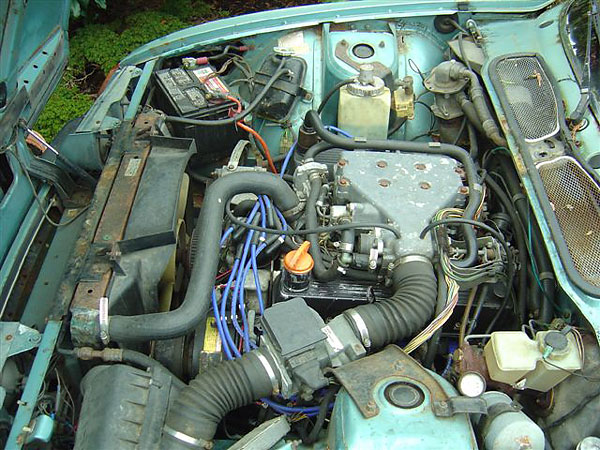
�
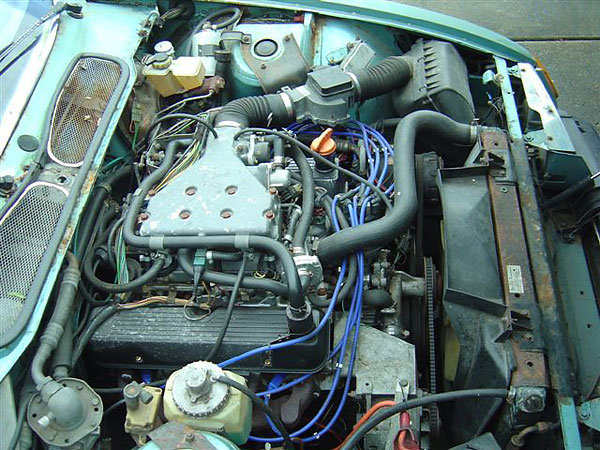
�
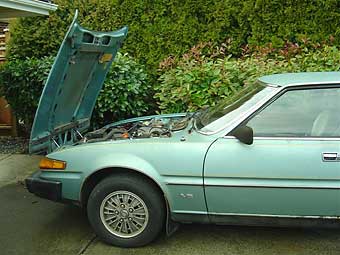 �
�
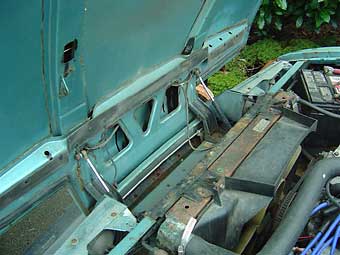
�
�
Where Spen King is concerned nothing is quite so straightforward as first glance might �
suggest. So you find that the live rear axle has a torque tube arrangement, anti-dive,�
anti-squat geometry, and self-leveling, the last using the ingenious leveling damper �
units first developed for the Range-Rover. Further axle location is provided by trailing �
links and a rear-mounted Watts linkage; cushioning is provided by constant rate coil �
springs. The torque-tube means that only a fairly short, single propshaft is needed, which �
knocks vibration problems on the head. �
�
For the front suspension, the nowadays "I wear all marque hats" King has utilised Triumph �
2000 Macpherson strut experience for his beloved Rover. The tops of the struts swivel in �
ball-bearing mountings and coil springs are offset to give less "stiction". As per normal �
MacPherson practice, the anti-roll bar and track controll arms locate the wheels. �
�
Burman power steering is standard - and uses rack and pinion for the first time on a �
Solihull Rover. Mounted ahead of the suspension crossmember, it uses torsion bar sensing �
for progressive steering feel. Its 2.7 turns lock-to-lock for a modest 34.3 ft. turning �
circle add another star to the score you will find in my driving impressions which follow.�
�
In some ways this new Rover appears a contradiction in terms of what the public in the past �
have been told is engineering advancement. Firstly, I've just written the de Dion axle out �
of the story (how many times have we been told that the de Dion is the best means of rear axle �
control?) Now, I shall dismiss rear disc brakes, about which Jaguar and Rover have at times �
done so much shouting - and owners and mechanics have done so much swearing. Thank you, �
Rover, for the outboard 9 in. rear drums (with efficient handbrake), ably backed by 10.15�
in., non-ventilated front discs, serviced by dual-line hydraulics and a direct acting servo.�
Those drums have a pressure limiting valve, automatically isolated in case of front brake�
failure. �
�
So often, the pre-announcement "blurb" and speeches thrust upon we motoring journalists�
by motor industry PR men are so much hot air fragranced by unfactual superlatives. �
Leyland are as good at doing that as anybody else. Rarely are we given a chance to sort�
out fact from fiction over lengthy mileages before writing announcement stories.�
�
Thanks to improved co-operation towards MOTOR SPORT from Leyland Cars, with whom we have �
not always seen eye to eye of late, I have been able to confirm both my own ecstatically �
enthusiastic reaction to my 200-mile Press launch drive and Leyland's own Press release �
superlatives with a subsequent several days and 1,200 miles of living with Pre-Production �
Vehicle No. 3, a Midas Gold, five-speed manual version of this new Rover.�
�
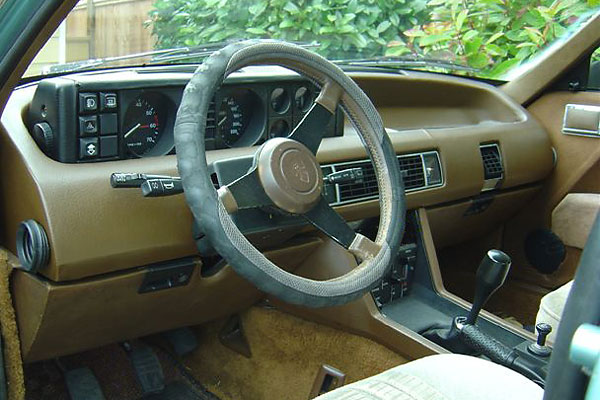
�
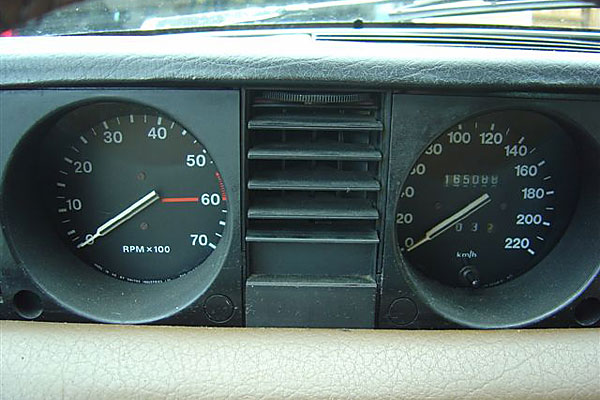
�
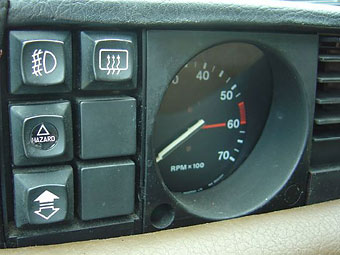 �
�
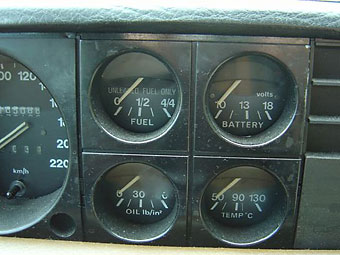
�
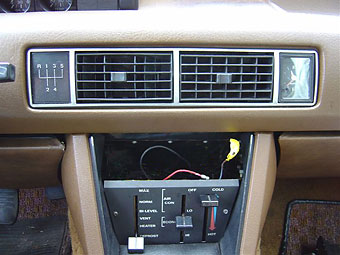 �
�
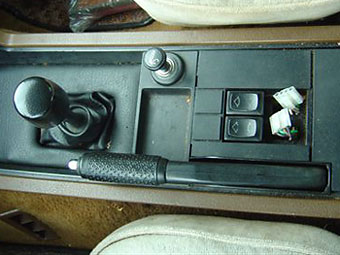
�
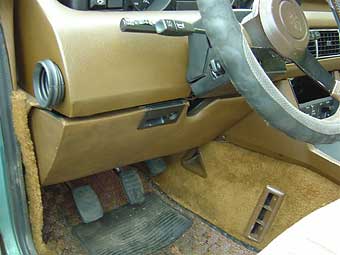 �
�
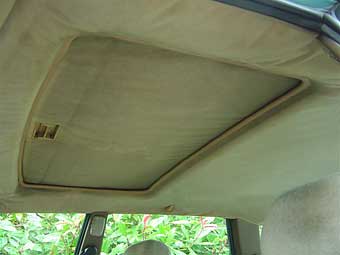
�
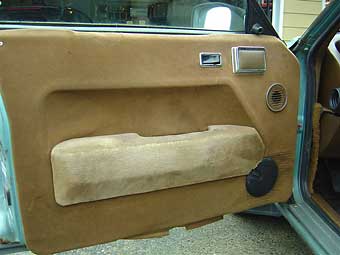 �
�
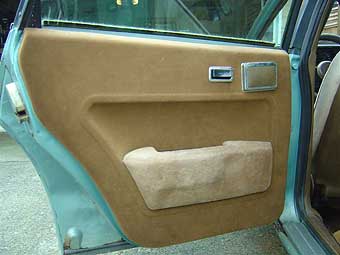
�
�
"Well, what do you think of it so far?" asked my passenger, Motoring News' Alan Henry, �
jocularly, within only a couple of hundred yards of the Chateau Impney, near Droitwich, �
as we left for the 200-mile Press Launch Drive in this new Solihull Sports Saloon. �
Some cars take a thousand miles' accustomisation before I decide I like them or not. �
This time, as I settled down to the tautness and torque of this big hatchback saloon�
and snicked that so-positive gear-lever through to its fifth speed for the first time, �
I had an instant conclusion: "This, Alan, is a proper motor car. I want one!" The�
subsequent 1,400 miles in that initial car, the road test car and a few miles in another �
fitted with the optional Borg-Warner 65 3-speed automatic, a most effective development �
of the old Type 35, which put the price of the basic, non-electric window car up to �
£4,900 have only served to make me even more enthusiastic.�
�
The driving position feels so good, for starters, helped by that adjustable, if ugly �
steering wheel. At rest the throttle looks to be too alienated from the brake, but on the �
move, heeling and toeing comes naturally. The seats are set quite high and there is almost �
a Range-Rover quality, see-all vista through the Triplex Ten Twenty laminated windscreen, �
tinted, like the rest of the glass area, as standard. This is the first production car �
to be fitted with the advanced Triplex screen which, say Triplex, "virtually eliminates �
severe cuts to the face and severe injuries to the eyes" in the event of an accident contact.�
�
Cold starting requires full choke, an instrument which needs playing with for a couple �
of miles for stop-start motoring, air temperature control valve or not. Hot starting is �
straightforward. The V8 warbles merrily, yet very subdued, at low speeds, emits some �
harshness when hard acceleration is employed, but settles down to a soothing, unflustered �
murmur when driven with a light right foot or at extremely high cruising speeds in fifth. �
�
Enjoying this article? Our magazine is funded through the generous support of readers like you!
�
To contribute to our operating budget, please click here and follow the instructions.
�
(Suggested contribution is twenty bucks per year. Feel free to give more!)�
�
It is that tall fifth gear which, with the excellent aerodynamics, gives this car such �
an extraordinary long-legged gait; this overdrive ratio offers 28.03 m.p.h. / 1,000 r.p.m., �
which means the eight pistons are moving at a mere 3,534 at 100 m.p.h.! On the other hand, �
the flexible V8 will pull fifth almost down to tickover. The owner of the automatic version �
will need a deeper pocket: on the same 3.08:1 final drive, his car will pull a mere �
(comparatively) 23.5 m.p.h. / 1,000.�
�
But gearing and aerodynamics mustn't be allowed to overshadow the engine's own contribution �
to uncanny economy. Leyland claim 24-26 m.p.g., touring and tell me the average over the �
duration of the Press test days was 27-28 m.p.g., with a worst of under 22 m.p.g. and a �
best of no less than 32 m.p.g. On one non-stop motorway/dual carriageway journey (abroad, �
of course, Your Honour) my road-test car averaged over 80 m.p.h., in spite of roadworks �
delays, to the tune of an incredible 25.6 m.p.g. On the other hand, this commodious 26.9 cwt�
3.5-litre saloon also proved much cheaper for commuting into the City of London than my TR6,�
with which regular transport I must inevitably compare it. While the 2.5-litre two-seater, �
and slower sports-car averages less than 18 m.p.g. for this journey, this Rover recorded �
21.3 m.p.g. when gearing and aerodynamics would be of little benefit. And to think I praised �
the petrol-miserly Porsche 911 2.7 for recording 21.58 m.p.g. over that journey, albeit �
on 2-star. The 9.35 to 1 compression ratio Rover needs 4-star in its 14.8 gallon tank. �
�
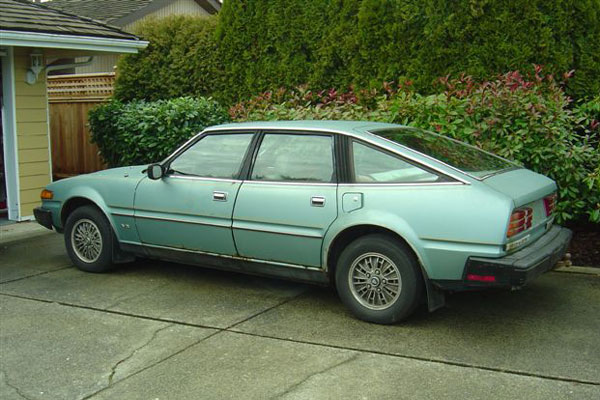
�
�
It is the aforementioned gearbox which helps make this car such a driver's delight. "Design�
a five-speed gearbox with a change as good as the Ford four-speed", was the engineers'�
requested criterion. The result I believe to be possibly the best mass-production five-speed �
gearbox in the world. It is a new type of design in that Timken tapered roller bearings�
are used on both mainshaft and layshaft, the first time they have been fitted to both �
shafts in a volume production box. The arrangement makes the gearbox stronger, more rigid �
and helps create the exceptionally positive gearchange. Peculiarly, reverse is on a dog's �
leg up to the left against a strong detent spring, instead of opposite the right-and-up fifth �
speed. There is a modest spring bias towards the third/fourth plane. The selection of every �
gear is satisfying, but the fourth/fifth and vice versa movement is particularly so: Rover �
have transformed into an easy, natural action a movement which has to be deliberate in �
most other five-speed boxes. Clutch pedal pressure is of middleweight requirements. �
�
Though the engine is particularly flexible, the improved rev. range makes it pay to put �
the crisp gearbox to work for best performance. Some idea of the usefulness of the ratios �
can be judged from the speeds at 6,000 r.p.m. in the lower three of 43 m.p.h., 69 m.p.h., �
and 103 m.p.h., second and third being superb overtaking gears. If anything it is a shade �
over-geared, for the sake of quietness and economy. Nevertheless, this car is quick: I'm �
informed that Rover's quoted 0-60 m.p.h. in 8.7 sec. and 125 m.p.h maximum are very �
conservative for Trade Description reasons and 127 and 8.5 sec. or less will usually �
be nearer the mark. �
�
In its handling and roadholding this machine feels every inch as though it has been �
designed by enthusiastic driver-engineers for enthusiastic drivers. It corners flat and �
neutrally, unless pushed forcefully into roll on tighter curves. Even in such extremes�
it shows no vices if emergency correction of line is needed or if the throttle is lifted �
off abruptly or if squashed hard to the floor in mid-corner; no sudden oversteer nor �
run-wide understeer, just wonderful adhesion, smooth stability and impeccable traction �
from the non-limited slip live rear axle. There is a degree of response and ability out �
of keeping with this car's size, engineered by tautness of suspension and communicative, �
sensibly geared, power steering. I never ceased to be astonished at the precision and speed �
with which the considerable girth could be slotted in and out of traffic or hurtled down �
winding lanes. All this is done at the expense of slight suspension harshness and radial �
thump at low speed: as speed increases the ride and absorption of bumps grows excellent,�
passenger comfort assisted by modest roll angles. There is none of the sick-making ride �
of the old model. On the one hand this Rover is a taut sports saloon, on the other a �
comfortable, luxurious express.�
� The test car's optional - extra wide alloy wheels and 195 section Pirelli CN36s seemed � to offer cosmetic benefit rather than road manner improvements compared with the standard � steel wheels and 185 section steel-construction Goodyears on my Press launch car. Those � disc/drum brakes provided creditably powerful retardation. High winds experienced when � crossing the moorlands into Scotland provoked infinitesimal twitch and in general this � 4 ft. 11 in. track 9 ft. 2.25 in. wheelbase car's straight-line stability is highly � impressive. That quality, the high gearing, reasonably low wind noise, and economy make � this car a magnificent motorway mile-eater, no doubt an admirable continental touring � car. What wind noise there is seems to come from the door mirrors (only the driver's of which, � is standard), which are manually adjustable from inside the car. When two are fitted, the � car becomes excessively wide. �
��
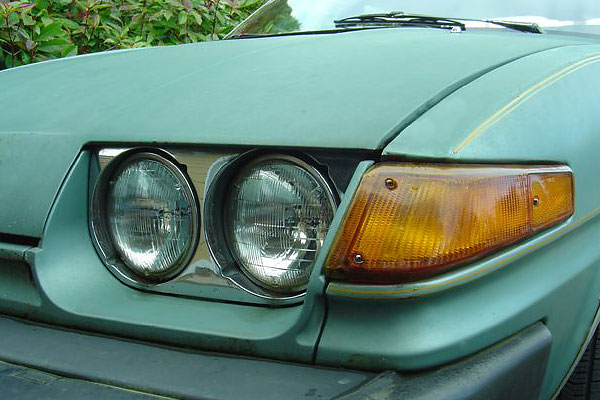
�
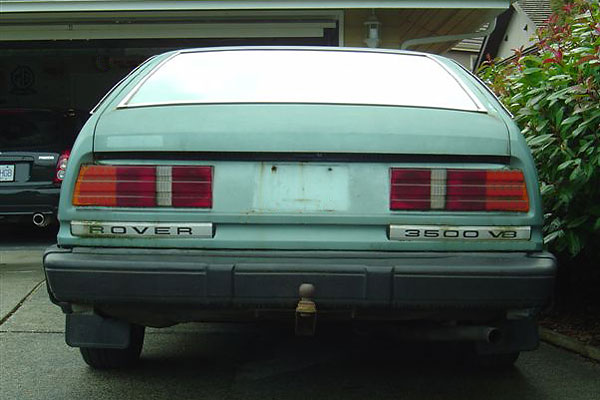
�
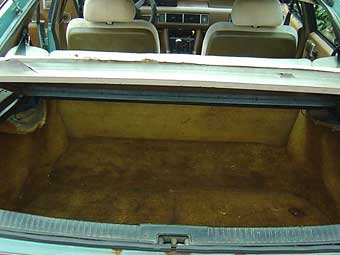 �
�
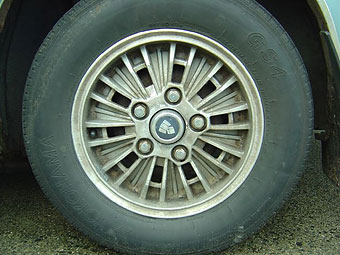
�
�
The gearbox whines overmuch in second gear, the spare-wheel needs a cover to avoid it �
dirtying the carpet, the bonnet prop can be released only from the nearside, four �
instead of two screen washer jets are needed for the big screen (these being operated, �
along with the two-speed plus fixed-speed intermittent wipers, dip, flashers and horn �
from steering column stalks) and what has happened to the splendid Rover toolkit of �
old? This is the sum total of criticisms, a credit to Rover engineers. The whole car �
feels splendidly rugged in Range-Rover fashion, has the markings of providing the best�
rowing saloon on the market and can have its new thermoplastic paint treatment carried�
out in metallic finish at no extra cost.�
�
The new Rover 3500 (should we call it Mk.II?) is as far removed from the Rover image as�
was the advanced 2000 in 1963. Traditional Rover owners may take some initial persuasion �
to buy, although they can continue to purchase the 2200 models, which continue in production �
along with the Triumph 2000s and 2500s. But Leyland should attract a vast new following �
from customers who would never have dreamt of buying Rover in the past. BMW, Citroen, �
Peugeot, Volvo, Renault, even Mercedes will feel the effect of this brilliant new car �
which initially is exclusive to the UK. Jaguar will doubtless lose a few customers too, �
though maybe gain a few traditional Rover type owners who prefer walnut luxury and a softer �
compromise of suspension and engine. And no longer do Chief Constables have an excuse �
for buying "foreign". Here at last is a British high performance luxury sports saloon �
to take the place of the much loved Jaguar 3.8 of the early '60s. I hope that Rover can �
supply what ought to be a fantastic demand and maintain the quality which the concept �
deserves.�
�
-C.R.�
�
�
If you enjoyed this article, you might also enjoy:
�
Rover P6 (3500S) Design Details
�
Leyland "Eight GE" Concept Car
�
Rover V8 History (courtesy of Autocar magazine)
�
�
Photos by Simon Austin. All rights reserved.�

